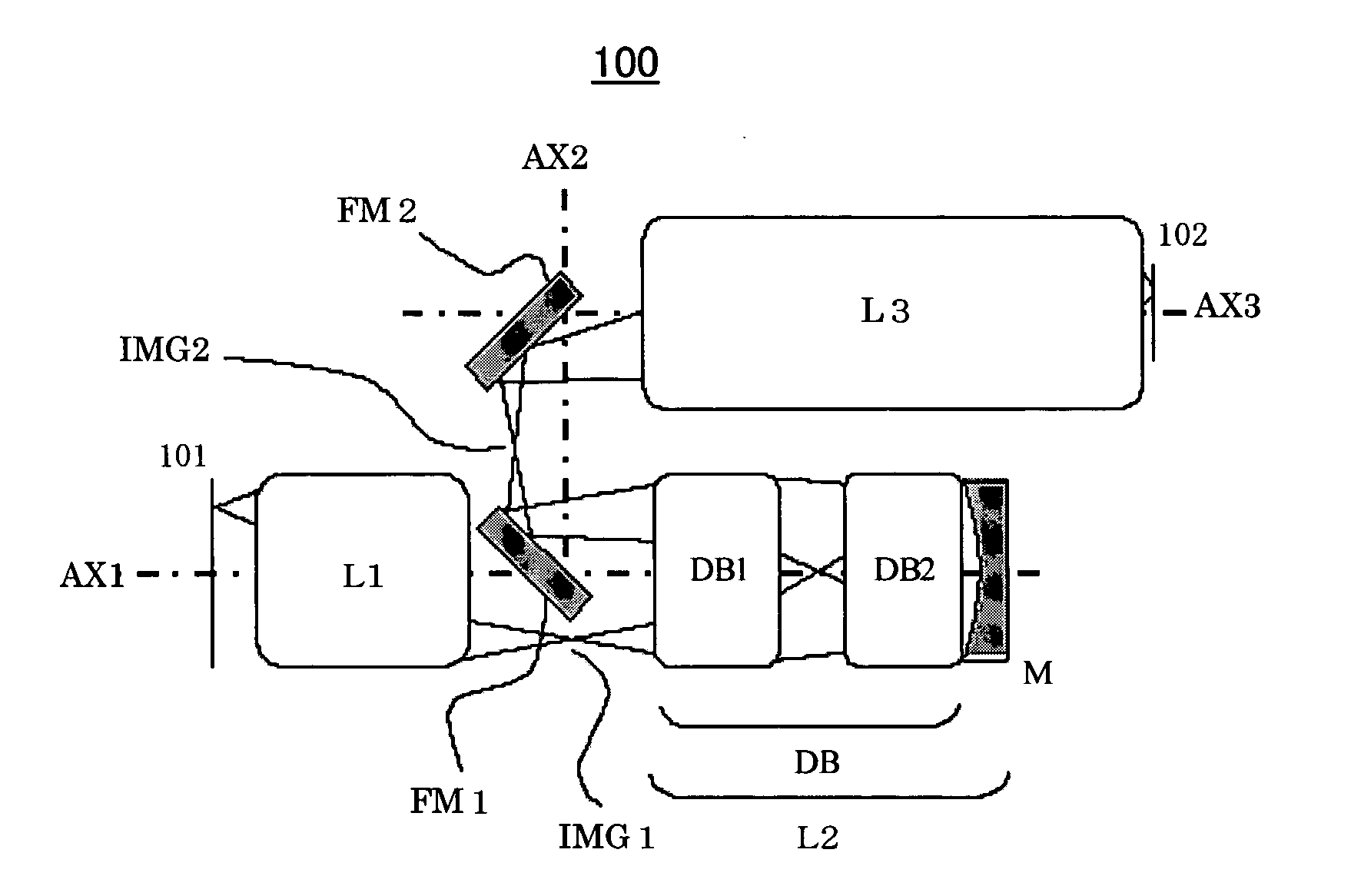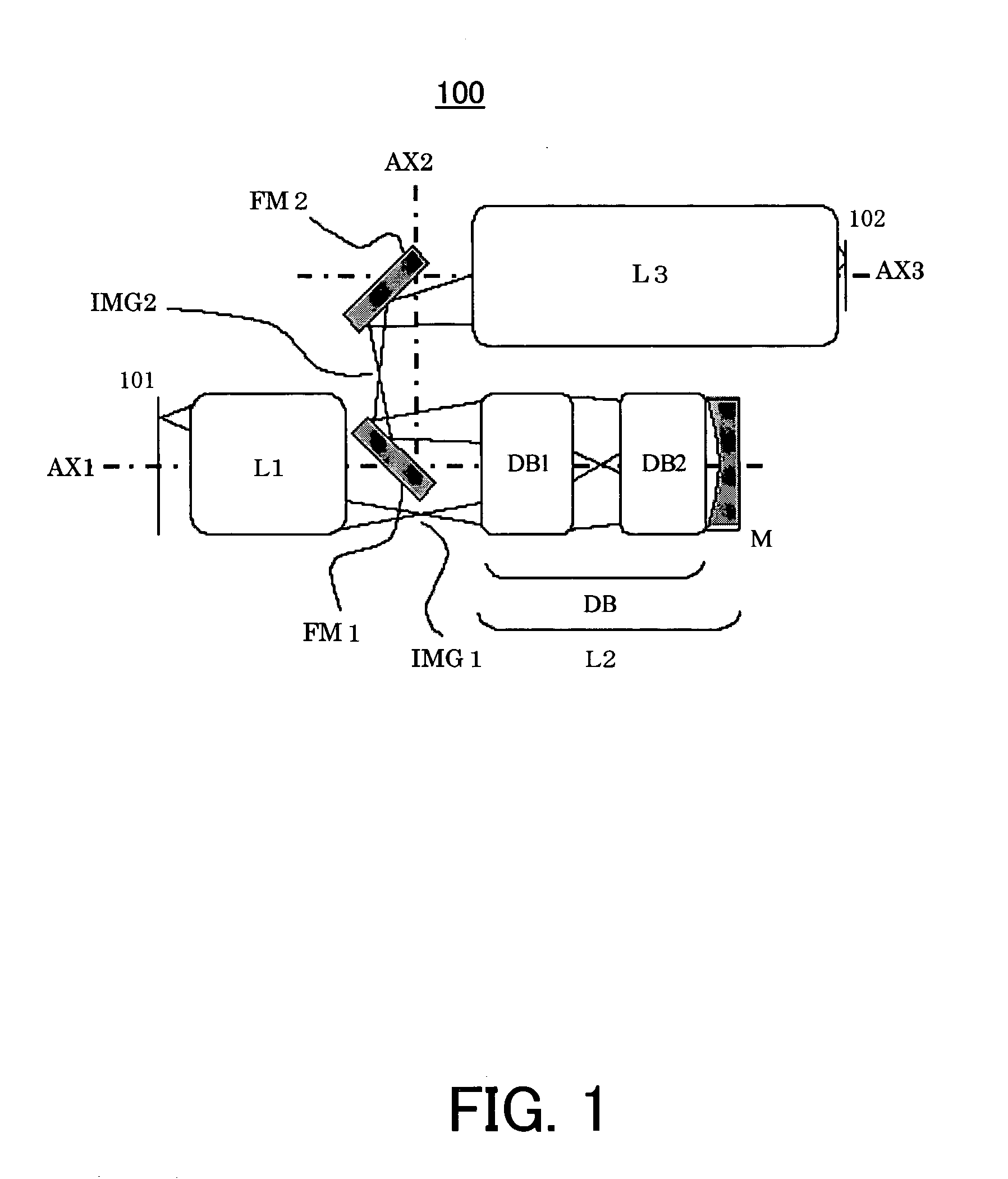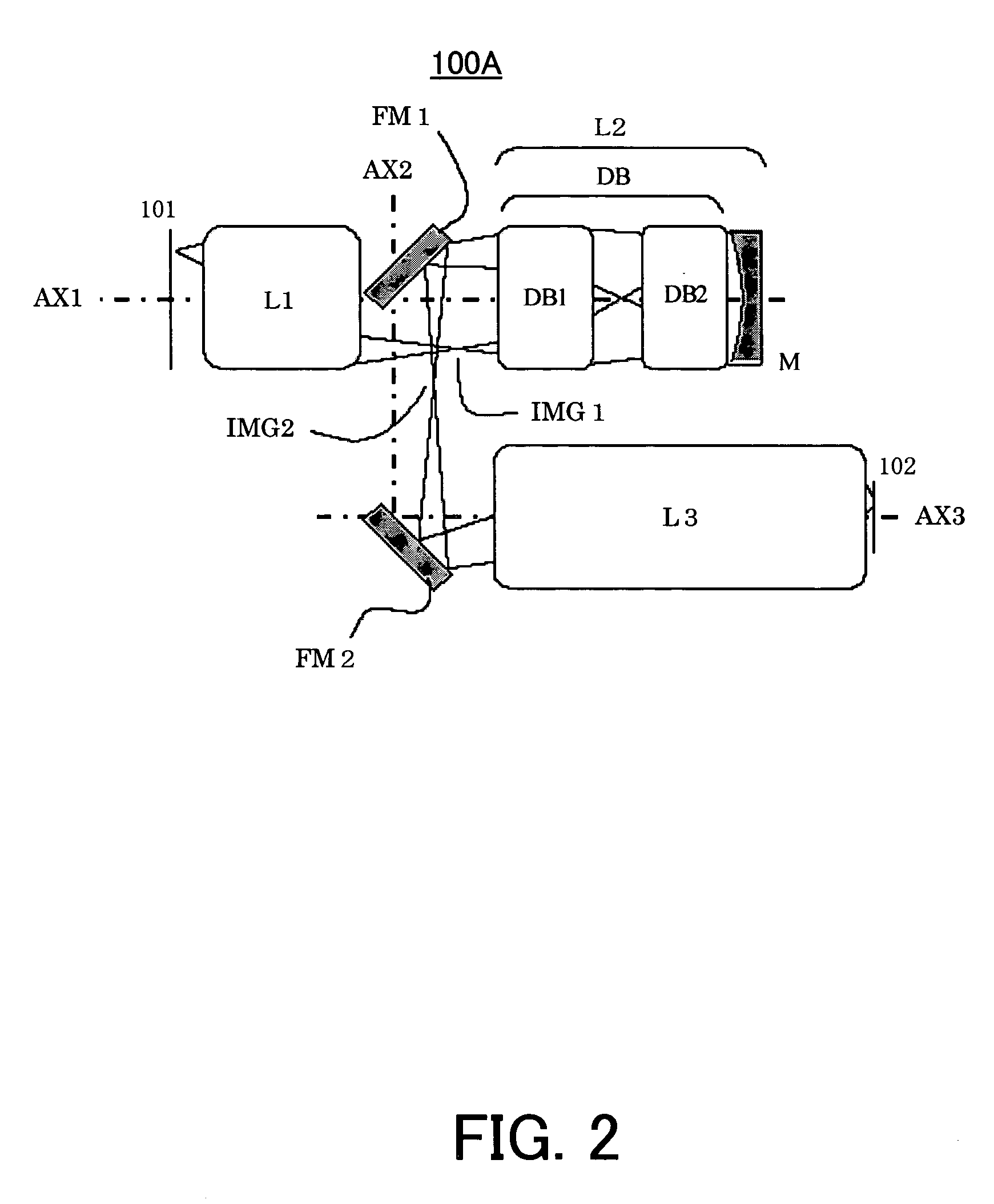Catadioptric projection optical system and exposure apparatus having the same
- Summary
- Abstract
- Description
- Claims
- Application Information
AI Technical Summary
Benefits of technology
Problems solved by technology
Method used
Image
Examples
first embodiment
[0081]FIG. 5 is an optical-path diagram showing a configuration of the catadioptric projection optical system 100 of the first embodiment. Referring to FIG. 5, the catadioptric projection optical system 100 includes, in order from the first object 101 side, a lens unit (a first lens unit) L1 that does not form a reciprocating optical system, a catadioptric unit L2 that forms the reciprocating optical system, and a lens unit (a second lens unit) L3 that does not form the reciprocating optical system.
[0082] The lens unit L1 is a dioptric lens unit that includes at least one lens. The catadioptric unit L2 includes a lens unit (a third lens unit) DB that forms the reciprocating optical system and a concave mirror M. Moreover, the lens unit DB includes a lens unit (a fourth lens unit) DB1 having a positive refractive power and a lens unit (a fifth lens unit) DB2 having a negative refractive power. The lens unit L3 is a dioptric lens unit that includes at least one lens.
[0083] The catad...
second embodiment
[0098]FIG. 7 is an optical-path diagram showing a configuration of the catadioptric projection optical system 100 of the second embodiment. Referring to FIG. 7, the catadioptric projection optical system 100 includes, in order from the first object 101 side, a lens unit (a first lens unit) L1 that does not form a reciprocating optical system, a catadioptric unit L2 that forms the reciprocating optical system, and a lens unit (a second lens unit) L3 that does not form the reciprocating optical system.
[0099] The lens unit L1 is a dioptric lens unit that includes at least one lens. The catadioptric unit L2 includes a lens unit (a third lens unit) DB that forms the reciprocating optical system and a concave mirror M. Moreover, the lens unit DB includes a lens unit (a fourth lens unit) DB1 having a positive refractive power and a lens unit (a fifth lens unit) DB2 having a negative refractive power. The lens unit L3 is a dioptric lens unit that includes at least one lens.
[0100] The firs...
PUM
 Login to View More
Login to View More Abstract
Description
Claims
Application Information
 Login to View More
Login to View More - R&D
- Intellectual Property
- Life Sciences
- Materials
- Tech Scout
- Unparalleled Data Quality
- Higher Quality Content
- 60% Fewer Hallucinations
Browse by: Latest US Patents, China's latest patents, Technical Efficacy Thesaurus, Application Domain, Technology Topic, Popular Technical Reports.
© 2025 PatSnap. All rights reserved.Legal|Privacy policy|Modern Slavery Act Transparency Statement|Sitemap|About US| Contact US: help@patsnap.com



